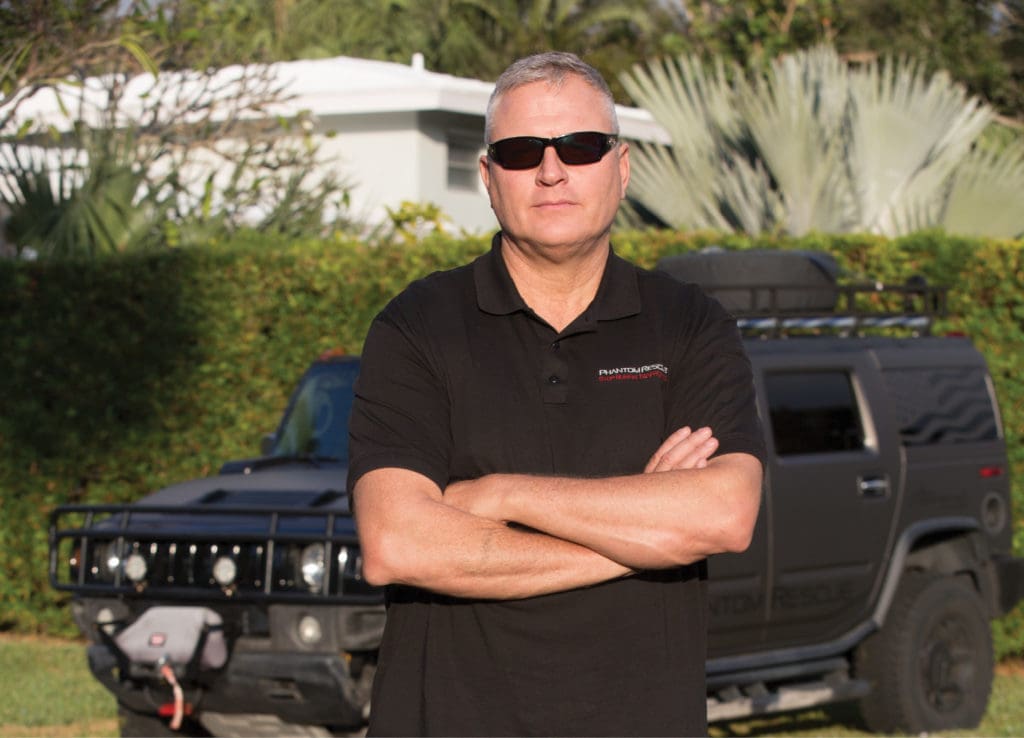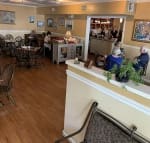The Human Commodity: Modern Slaves
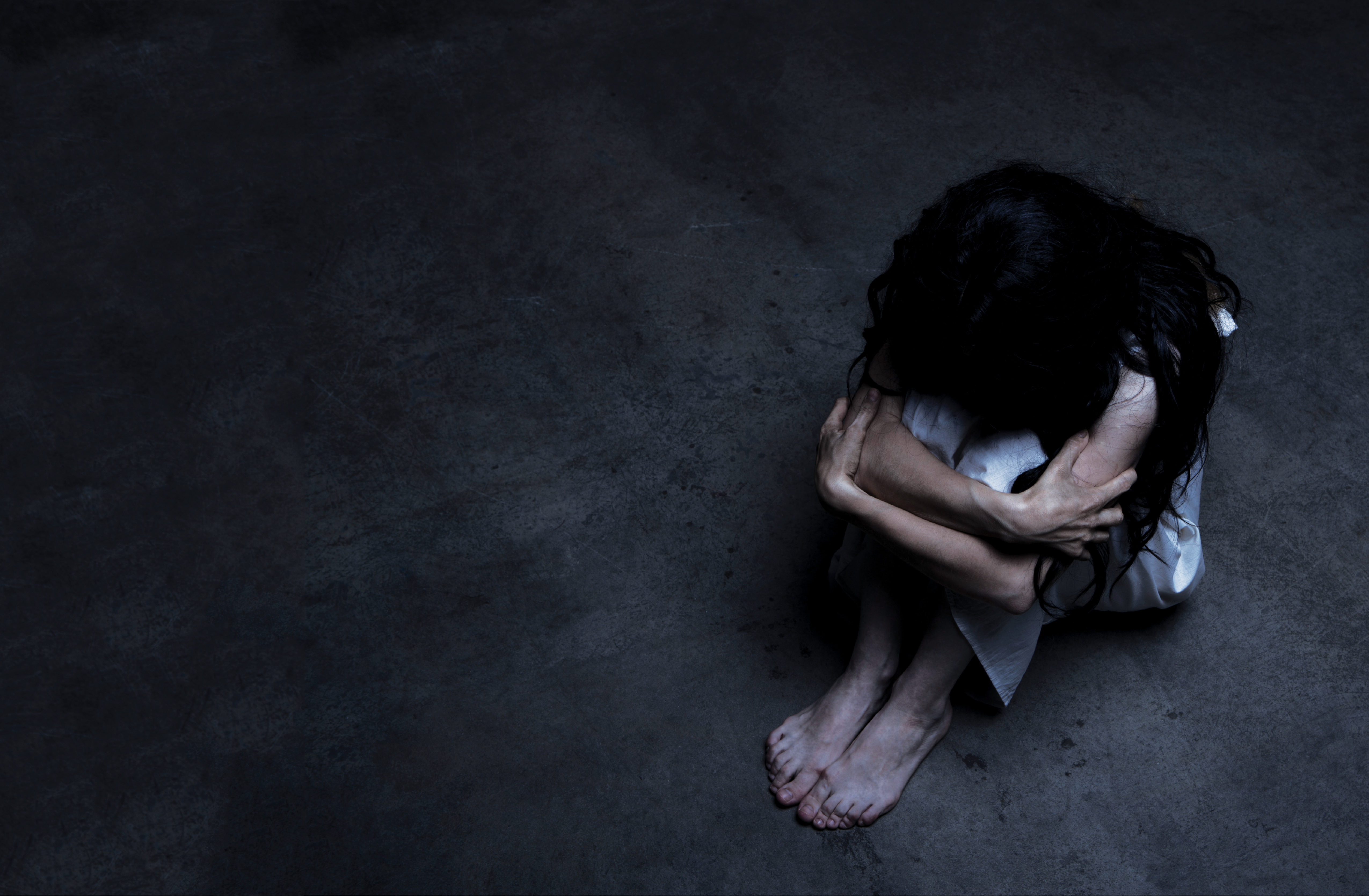 By Danielle Charbonneau
By Danielle Charbonneau
In Honor of Human Trafficking Awareness Month
Last month, Lighthouse Point magazine ran a feature on Sharon Stephenson, the owner and entrepreneur behind Blooming Bean, a newly opened coffee shop on the first floor of the Bailey Contemporary Arts center. During our interview, we quickly discovered Stephenson’s deep passion and commitment to help end human trafficking. We also learned about Tony Sparks, a Pompano Beach resident who leads a military-style rescue operation for trafficked children around the world and consulted on the Hollywood blockbuster movie series “Taken.”
We were intrigued; we hadn’t expected a lesson in human trafficking alongside our espresso. Our initial intrigue, however, was quickly followed by a deeper curiosity and line of questioning: Is human trafficking really an issue here in Broward County? If it is a problem, how and why? And who are the local players fighting against the problem? We set out to investigate.
What we found was basically this: human trafficking is indeed alive and well in South Florida. Florida ranks third behind California and Texas for the number of calls to the National Human Trafficking Hotline. This could be both indicative of the scope of the problem, and of an increase of calls due to awareness campaigns. Quantifying an underground economy such as human trafficking can be difficult, but all the sources Lighthouse Point magazine spoke with agreed that human trafficking is indeed a local problem. Broward County ranks third in the state for the highest number of human trafficking cases per county. And, a whole host of local organizations are involved in both the fight against human trafficking, and the rehabilitation of its victims. For this feature, Lighthouse Point magazine speaks with some of Broward County’s leaders in the local fight against human trafficking.
[row]
[column size=’2/3′]
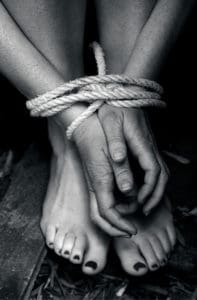
The Local Fight Against Child Trafficking
“I feel like I just got kicked in the gut,” said the woman sitting next to me at the conclusion of the Broward County Human Trafficking Coalition (BHTC) quarterly meeting held at Nova Southeastern University on Dec. 6. The whole crowd looked a bit shell-shocked. We had just listened to a young woman share her harrowing tale of sexual abuse as a survivor of human trafficking — the term used to refer to modern slavery (most commonly for sex or labor).
December’s coalition meeting had gathered roughly 50 impressive and passionate leaders from law enforcement, the FBI, child protective services, school educators, medical professionals, attorneys, psychologists, case workers, homeland security, non-profit directors, academia and a whole slew of other individuals all engaged in Broward County’s fight against human trafficking. The BHTC hosts such meetings to share knowledge and build a strong network of both government and non-governmental organizations to battle human trafficking in Broward County. The co-op is a testament to both the active efforts being made in the county, and the large scope of a local problem.
After the survivor (who will we call Sarah for the purposes of this article), finished sharing her story, the coalition gave her a standing ovation and proceeded to barrage her with questions, all centered around how the coalition could better serve potential and actual victims of human trafficking in South Florida.
Sarah (a Florida native with pale skin and a shy, yet confident demeanor) told the coalition her story, provoking a chorus of gasps and sighs of disbelief.
Sarah was sold for sex by her own mother. The first time Sarah’s mother, a crack cocaine addict at the time, sold her for sex, Sarah was only 11 years old. She was first sold for the price of $10. Sarah’s mother had been prostituting herself for drugs and had brought Sarah along to her business affair. This time, the “john” (a term used for men who purchase sex), requested Sarah instead of her mother. Her mother obliged and for the next two years Sarah became her mother’s commodity, bought for sex and sold for drugs by her mother and her mother’s drug dealers.
Though Sarah’s story might not fit the stereotypical definition one thinks of when thinking of trafficking, by law, any child under the age of 18 who is used for the purposes of commercial sex is considered the victim of trafficking. By law, no child can legally consent to sexual exploitation. Sarah’s horrific story is what the Attorney General refers to as a “services case” — a trafficking case in which the child is part of the social services system.
While these cases are prominent, Jumorrow Johnson, the Vice President of Education and Outreach for the BHTC, said it is a huge misperception that cases like Sarah’s are the only kind. In fact, the number of “community children” cases (in which the child is under the care of their guardians) has increased.
At the December BHTC meeting, a representative from the PACE Center for Girls read the most recent numbers from the Broward Sheriff’s Office, Child Protective Investigations Section (BSO CPIS) who keeps statistics on the number of cases that come through their offices identified as having Human Trafficking (HT) or Commercial Sexual Exploitation of Children (CSEC) indicators. Of those cases, some are then staffed, meaning they are assigned investigators and social services. From those investigations, some are then verified as indeed being human trafficking cases; and of them, some are marked as being “community children.”


From May 2016 to Nov. 2016 (in just seven months) in Broward County, 111 cases were investigated for HT. Of the 111, a whopping 93 were community children, while only 18 were dependent children (social services dependent). These numbers have vastly increased since 2015. As Victor Williams, a special agent on the South Florida Human Trafficking Task Force, pointed out in the meeting, in 2015, only 99 cases were investigated total, 68 being community children.
“It’s happening. It’s absolutely happening…and that’s a lot of kids,” said Johnson. “That’s the highest number we’ve had for community children. That’s why what we do is so important. Those numbers are because people are calling in. When they are seeing something, they are saying something.”
From her 20 years of experience as a victim’s advocate, Johnson suggests that community children are actually more sought after than services children by manipulative traffickers who recognize that community children are more vulnerable in many ways.
“Remember community children have a lot more to loose than dependent children do, so they are a lot easier to control. They come from love and values and morals and have an understanding of reputation and honor. A pimp understands that anything that tarnishes that could be devastating. So the trafficker uses that to keep them under their thumb,” she said.
The Tactics
Johnson gave several examples of the tactics used by traffickers when it comes to community children. The first being the “Romeo Pimp:” a trafficker who romances a girl, winning her heart, meanwhile collecting photographs and videos (often unbeknownst to her) that he can then hold over her.
These Romeo Pimps even insert themselves into the family during the grooming process to both woo the girl and learn more ways to manipulate.
“He’s essentially dating her into the life,” said Johnson.
Becky Dymond, a trauma therapist who founded Hepzibah House (a rehabilitative home in Boynton Beach for survivors of trafficking) says she sees these types of cases frequently.
“The perversity of it is he [the pimp] knows that when you first meet a gal, you listen. He wants to hear what her dreams are, what her aspirations are, what is important to her, what makes her tick, what motivates her, because then he’s going to use all of those things to trap her and keep a carrot in front of her.”
Johnson said another tool traffickers use is to lure individuals on the promise of modeling and acting gigs.
Tony Sparks, the founder of Phantom Rescue, a Broward-county-based non-profit that uses trained, ex-military professionals to rescue kids who have been abducted, also counts social media as one of the major culprits to blame for increasing human trafficking.
Sparks agrees with Johnson that the misperception that trafficked children are all from bad communities is a
“huge misnomer.”
“I often hear people say, ‘oh these were wayward children.’ No. I’ll show you plenty of cases that they’re not,” Sparks said. “Out of the 49 children we have recovered [at Phantom Rescue], not one was a services abduction. There’s this perception that it’s only the services child that ends up in trafficking — it’s a bunch of poppycock.”
From his ten years of experience rescuing victims, Sparks guesstimates that only about a third of the children abducted are “services children.” Another third he estimates are community children.
“These are your boys and girls next door,” said Sparks.
The last third are what Sparks calls “targeted abductions by name or pedigree.” This is a child that is essentially profiled and ordered by traits on the dark web, put out for bid, then stolen by traffickers.
“So these girls are not just a bunch of bad girls where society says ‘I’m not going to deal with them, they’re just a bunch of runaways and drug addicts,’” Sparks said. “Well shame on people that think that.”
Johnson says human trafficking “doesn’t discriminate.”
“It doesn’t care where you’re from. It doesn’t care where you live, it doesn’t care about your socioeconomic standing or background. Anybody can fall prey to sex trafficking.” she said. “Just because you choose to think that it will never happen where you live doesn’t mean it isn’t happening where you live. I’m pretty sure that if someone did a survey of every single neighborhood in Broward County, whether its a low-income neighborhood or the suburbs or affluent neighborhoods, there has been a child in every single neighborhood that has been touched in some way. Saying it doesn’t happen here is like saying there’s 13 months in a year. Its ridiculous.” [/column]
[column size=’1/3′]
Insight From the Experts


— Jumorrow Johnson, Vice President of Education and Outreach for the BHTC; over 20 years of experience as a victims’ advocate and 15 years of experience with the Department of Juvenile Justice.
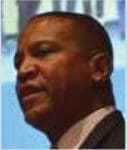

— Victor Williams, Special Agent, Human Trafficking Task Force
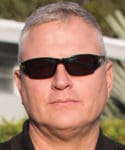

— Tony Sparks, founder of Phantom Rescue, Inc., a Broward County based non-profit that uses trained, ex-military to rescue trafficking victims in the U.S. and abroad
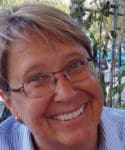

— Adriane Reesey, Project Director of 1Htc, the umbrella coalition for human trafficking organizations in the Southeastern Florida region; experience in law enforcement.
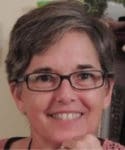

— Becky Dymond, M.S. Counseling Psychology and the founder of Hepzibah House, a rehabilitation home in Boynton Beach for survivors of human trafficking and sexual exploitation.
“So for South Florida you have the farms and fields, you have the tourism industry, you have the sex trafficking and you have all these wealthy families bringing their staff here, so you can see why South Florida is so big as it comes to trafficking and why it’s such a hotbed for trafficking.”
— Carmen Pino, Assistant Special Agent In Charge of Homeland Security Investigations and a spokesperson for the South Florida Human Trafficking Task Force
[/column]
[/row]
A Shift in Perception
Though by law Sarah’s story is considered a clear case of human trafficking, Sarah herself didn’t identify as a human trafficking survivor. Instead, she shamefully identified as a child prostitute. As she began to understand what human trafficking is, however, she realized she was indeed a survivor.
This perceptual shift is one that Dymond says is critical for an individual to begin to correctly place their shame on the abusers, traffickers and johns, rather than themselves.
“When I talk to women, they usually self-identify as a prostitute,” she said. “I don’t usually talk to them about it right away, but eventually I’ll come back and ask them: ‘Okay so, whose idea was it, was it your idea?’ ‘No.’ ‘Was it something that you enjoyed? Was it something that worked for you?’ ‘No, absolutely not.’ ‘What if you said, can I just get a job at Target or in public?’ ‘No.’ ‘What if you said, my mom is sick and I need to go visit her, could you?’ ‘No — there were people around all the time. I was always being watched.’ Then I’ll say, ‘Okay, so how much money did you make?’ ‘Oh I made great money, awesome, you know.’ ‘But how much of that did you get to keep?’ ‘None of it.’ I submit to you that you were not a prostitute, that you were trafficked.’ Often that’s when the light bulb goes on.”
Once the light bulb goes on, Dymond says she watches as all the lies, all the blame, all the stuff the traffickers said, begin to unravel.
“It’s like you can just see it kind of breaking over them,” she said. “Our minds will go to a big effort to avoid being helpless and powerless. We don’t want to be a victim. We want to think we had a choice. We don’t want to feel like there was nothing we could do, so, we’ll tell ourselves all kinds of stories.”
Carmen Pino, Assistant Special Agent In Charge of Homeland Security Investigations and a spokesperson for the South Florida Human Trafficking Task Force, says this perceptual shift — from seeing an individual as a criminal, to seeing them as a trafficking victim — is one that has to happen both on the individual and the societal level.
“We take what is known as a victim centered approach,” Pino said of the Task Force. “And it’s something we as law enforcement and even as prosecutors, and now as legislators, had to come to realize: A 15-year-old girl is not a prostitute, she’s a victim. Why should we be penalizing someone for being duped and being exploited? That was something that has taken many years. These people, whether men, women or children, are victims first. Regardless of the crime that they are involved in, they are in involved because they are being forced to do it. In the old days people would say, oh she’s just a prostitute. Well now our whole semantics have changed. And now you are starting to see that in the law, which is very, very good.”
Both in Florida and in many states, laws penalizing johns and pimps have increased, but many still find them to be minimal. In 2014 Florida increased the penalty for soliciting sex from a misdemeanor and a $500 fine, to a misdemeanor and a $5,000 fine.
“It’s something, but its not enough,” said Williams, who is a huge advocate for changing cultural perspectives on prostitution and human trafficking.
“Cultural changes is what I talk about,” said Williams. “Culture is what made it ok for someone to buy a woman. Everyone in the room needs to ask themselves ‘what am I doing to perpetuate this problem.’”
Dymond said the porn industry is one factor that perpetuates the problem. Not only is “a lot of porn done by slavery,” she said (she guesstimates, by her research, about 80 percent), but it also contributes to the culture, hunger and demand for sexual services.
Catherine Mackinon, a feminist professor at Harvard Law School who has studied the connection between human trafficking and the porn industry, writes that “consuming pornography is an experience of bought sex” and thus “creates a hunger to continue to purchase and objectify, and act out what is seen. And in a very literal way, pornography is advertising for trafficking, not just in general but also in the sense that traffickers and pimps use pornographic images of victims as specific advertising for their ‘products.’”
Adriane Reesey — who is the former president of BHTC, has worked in law enforcement and criminal justice for over four decades and is the Project Director for 1HTC, the umbrella organization that networks human trafficking coalitions in Southeastern Florida — said that in order to combat human trafficking, society must also look at what increases demand. Trafficking, she pointed out, is a supply-and-demand business just like any other.
Pino agreed. Wherever there’s a need, “someone will step in to feed that need,” he said.
Rescue & Rehabilitation
In many ways once an individual is rescued from a trafficking situation is when the hard work begins — both on the individual level, and on the institutional level.
“It’s not just like working a narcotics case or a gun case where you put that piece of evidence on a shelf when you go onto the next case,” Pino said. “You have a responsibility now with that victim. It’s very resource intensive.”
And in most states, including South Florida, resources for the rehabilitation of victims are scarce. Pino, Johnson, Reesey and Sparks all agreed that the rehabilitative end of the problem is one area where improvement is needed.
“There are only about 300 beds for about 3,000 victims,” said Sparks. While Pino did not have exact numbers to validate Sparks’ guesstimate, he agreed it’s approximately ten percent.
“It’s not so much scarce resources from law enforcement or prosecution that’s the problem,” Pino said. “Its scare recourses once we have the victims rescued. The number of bed spaces specifically designated for human trafficking victims is pretty low. I could tell you back in 2008, it was non-existent. So the community had to get creative. Social services had to get creative. A lot of times we would have to place victims into either a shelter for women that were battered from domestic violence, or even sometimes homeless shelters. Bed space is one of our greatest challenges, and just finding services alone is difficult. There is a lot of great movement, but it’s not there yet.”
Even if a victim does find shelter, Dymond and Johnson said the obstacles individuals must overcome in treating their trauma, learning a “new normal” and adapting to new life often seem insurmountable.
“Surviving is the first part. Being able to thrive in your life afterwards, thats the challenge. That’s the victory,” said Johnson.


Unfortunately it is common for survivors to actually resist recovery, which can be baffling to family members, service providers and outsiders. Johnson says the reasons for this are many: tremendous fear, not having a supportive place to go, mistrust of the system, the terror of the unknown, a feeling that the “devil you know is better than the devil you don’t,” overcoming the challenges of PTSD and trauma (which contribute to the instinctual fight-or-flight response), drug and alcohol addictions (which are often perpetuated by pimps as a way to coerce), psychological manipulation by traffickers and strong co-dependency.
“They [victims] often become co-dependent on their pimp and their trafficker. They depend on them for food, clothing, shelter, and in many cases, especially with a romeo pimp, these young women actually fall in love with these men, so that’s a huge obstacle we are dealing with now. They feel so loyal to them because at a certain point in time, this guy treated them like no one else ever had. He was kind and sweet and romantic and loving. They don’t understand that it was all a part of the grooming process.”
Many times survivors struggle with Stockholm Syndrome and what psychologists like Dymond call “trauma bonding.”
“The brain does funny things in a dangerous and chaotic situation,” she said. “The limbic system (which takes over in, and after, traumatic situations) is hard wired to override my prefrontal cortex where executive reasoning happens.”
This is why Johnson says it is so important to never judge how someone “should be responding to something that is happening to them.”
Dymond said recovery “is an arduous process.”
“I think about the women that I’ve worked with long term and they’re like my heroes,” Dymond said. “I can’t even begin to imagine the amount of work it takes to move past all the trauma.”
And for some of them who were also abused as children, Dymond said, “the trafficking is just like the exclamation point. It’s just like the latest in a whole history of trauma.”
Awareness & Tools for Parents
In her 20 years of experience working with victims and their families, Johnson said that one of the first things parents can do to protect their child from trafficking is to communicate.
“A lot of times when I’m talking to families or parents that find out that their children are involved in the sex trade, and we start getting into the meat of what’s going on, the parents don’t really know the ins and outs of the child’s life. Communication and being involved is a huge, huge thing; and I’m talking about the children who are being affected who come from homes.”
Johnson also subscribes to the idea that “it takes a village to raise a child.”
“Everyone minds their own business these days and in certain instances you really shouldn’t be minding your business, especially in cases where children are concerned,” she said. “Because people are minding their business, our children are being ravaged on a daily basis. I think the community needs to get back to caring about what is happening to all of our children, not just your child.”
Johnson also advocates for schools to implement workshops or classes that talk about healthy relationships, self-esteem, motivation and how to deal with failure.
“Many kids don’t have social or emotional skills. They don’t know how to respond to failure. They don’t know how to respond to hurt. They don’t know how to respond to trauma. I think when they are taught how to focus their energy and how to react, it helps them to think better and to make wiser choices,” she said.
Phantom Rescue also teaches courses on how to prevent abductions at schools, companies, community organizations like the Girl Scouts of America and through videos online.
“Our classes target everybody. We put a lot of emphasis on Fortune 500 companies. Rich people have no common sense when it comes to abductions. We’ll target communities of those individuals that just don’t know any better,” said Sparks. “Unfortunately, most people don’t want to hear it. The failure in human trafficking, believe it or not, is the parents. They just don’t know what to teach their children. Theres not enough police, theres not enough members of the task force, to fix all this if we can’t get our parents to wake up and realize the truth. Its just cold hard facts. No one knows how to stop abductions because they don’t want to read about it, they don’t want to hear it, they don’t want to talk about it, because they just don’t believe its true.”
The 101
Why South Florida?
Carmen Pino, Assistant Special Agent In Charge of Homeland Security Investigations and a spokesperson for the South Florida Human Trafficking Task Force (a team that works with Homeland Security, the Attorney General’s office, local law enforcement and non-governmental agencies to combat and prosecute human trafficking), helped shed some light on what exactly human trafficking is, and why South Florida is what he calls a “hot spot for human trafficking.”
Human trafficking, he says, is often misunderstood as human smuggling; Images of people being transported in the hulls of boats or imprisoned in closets is what many minds conjure up in association with the term human trafficking. The term, however, actually refers to any form of modern slavery (most commonly people used for the purposes of sex or labor).
By law, a person who has been trafficked is anyone who has been forced to work by means of “force, fraud or coercion.” Force, he says, refers to brute physical threat. Forms of coercion most commonly include blackmail material, debt owed, threats to family members, kidnappings, the threat of deportation and other forms of psychological manipulation. Fraud generally refers to individuals who have been lured to work under false pretenses. These include people who are brought to the U.S. on legitimate visas and “lured by the American dream, only to find the American nightmare.”
In addition, by law, any child under the age of 18 who is used for commercial sex purposes is considered the victim of human trafficking (under the rationale that no child can give consent to be used for commercial sex purposes). South Florida, Pino says, is a “hot spot for human trafficking” because of its geography and culture. For starters, he said, South Florida is one of “America’s playgrounds.”
“We have a very big tourism industry, especially in the South Beach area where it has that vibe,” said Pino. “It’s very cosmopolitan and unfortunately there is an underground economy that really drives this. People come into town and they just don’t want to be at the beach, they want to do drugs and hire escorts.”
“We are also a big area for labor trafficking,” Pino said. “The reason being its ties to the tourism industry.”
A vast array of hotels, bars and restaurants, plus a highly lucrative winter season when snowbirds descend on South Florida, all make the area ripe for human trafficking. In addition, the agricultural businesses offer ample opportunities for exploitation.
Wherever there’s a need, Pino says “someone will step in to feed that need.” The people who feed these needs range from organized crime syndicates, to the “romeo pimp” who lures a young girl into the sex trade by romancing her, to labor placement organizations who use trafficked individuals at construction sites or in large hotels. Then there are what Pino refers to “indentured servants” who are kept by wealthy families as nannies or housekeepers. The range is vast, but Pino says South Florida is ripe for many of the forms.
A LOCAL VETERAN’S FIGHT TO RESCUE TRAFFICKING VICTIMS
Tony Sparks, a Pompano Beach local, has been shot, cut and stabbed more times in the last ten years than in his entire 25-year military career. That’s saying a lot for a man who implemented and oversaw the removal of Blackwater in Iraq.
Since retiring from the army, Sparks started Phantom Rescue, Inc. a non-profit organization officially aligned with Homeland Security and the Broward Human Trafficking Task Force to help rescue children who have been abducted and are stuck in potential trafficking situations. In his ten years running Phantom Rescue, Sparks has made 49 rescues, both in the United States and abroad.
Sparks started Phantom Rescue with a professionally-trained team of ex-military members who wanted to utilize their military training to make a difference. They had seen the ravages of human trafficking abroad and started to see trafficking as a prominent problem in the U.S. They formed Phantom Rescue in 2005 to help locate, strategize and rescue children. In addition, Phantom Rescue helps run awareness seminars to educate people on human trafficking and how to prevent local abductions.
In an interview with Pompano Magazine. Sparks explained the Phantom Rescue process:
When a child goes missing and governmental authorities have exhausted their resources then Sparks’ team at Phantom Rescue steps in.
“We have several guys that work on the dark web at night on the internet, basically looking for children every night,” explained Sparks. “We’ll take the picture that a parent provides, or we’ll do a scan, or whatever strategies we can use to find that child.”
If a parent comes to Sparks and Phantom Rescue directly, then Sparks helps connect them with the right authorities.
“Then we have to validate that the family didn’t sell the child or that they’re not a part of the bad process where they did something wrong,” said Sparks. “There’s a lot of bad things that occur and this happens a lot.”
Sparks said parents who sell their own children for profit is an increasing problem in the United States.
“In foreign countries its common. It’s very common. It’s almost a way of life to actually breed children to sell. They become indentured slaves,” he said. “Its huge in Africa. Huge in Indonesia. But its becoming quite common in the United States for parents to take a certain pedigree of child and say, I need to get out of debt, and here’s a pathway.”
If the parents’ story is validated, then Sparks’ team will work with U.S. authorities to help locate and rescue the child.
“We work very delicately in the United States. We know how to not break the rules, but to bend the heck out ’em, with permission of the local authorities and the U.S. Attorney General’s Office,” he said. “Then, once we target, fix, find and locate, we’ll go into a country, and we’ll go into those countries based on the tier level of the country.”
Different countries have different policies when it comes to human trafficking.
“A tier one country is like America, Great Britain, Canada — one that has a positive, aggressive means to stop trafficking,” said Sparks. “A tier two country is a country that says they are trying to stop human trafficking, but they’re not really. A tier three country is a country that says ‘you know what, I’m going to use it [human trafficking] as a means of gross national product. And there are more of those countries than you can imagine.”
Once a child is located, Sparks’ team plans their strategy.
“If it’s a tier one country and they’re going to work with us, we’ll fly in, we’ll do everything by the book, we’ll work with the local authorities, we’ll go get the child very aggressively and we’ll take them to the U.S. embassy or the embassy of their nationality. Then, turn them over,” he said. “In a tier two country, we’ll work with the country as much as we can. For example — Papa New Guinea called us. They are tier two. They said ‘listen, you can come here, but you can’t come through the airport, you can’t get your passports scanned because when they see that you’re here, they are going to retaliate against us as the government.”
“Now, say we find a missing child and we’ve located them in a third tier country. That means the government says ‘you can’t come here, you’re not allowed. And if you do, we’re going to arrest you.’ You don’t take an airplane. You don’t take a boat. You don’t take planes, trains and automobiles. We’ll go into a country and we’ll either pretend to be a sky diving team or a scuba diving team — thrill seekers — anything that doesn’t interfere with the government,” explained Sparks. “We’ll take off, we’ll climb to 15,000 feet, we’ll sky dive in, we’ll land, we’ll make our way to a high sight, we’ll work with an on-the-ground person that we have paid to be an informant. He’ll help us find the area, we’ll prosecute the target, take the child. We will not do anything with the bad guys because if you get in trouble in a foreign country and you kill someone you’re in timeout for the rest of your life. We’ll take the child, we’ll run to the embassy of origin and then we’ll turn them over. Then we get out of dodge.”
Sparks said these missions can be very dangerous, even fatal. For a mission the team planned in March, Sparks’ best friend, co-worker and business partner of 34 years died during training.
“He had a dual parachute malfunction while sky diving into Lakeland right outside of Orlando. He perished that day while we were training to rescue 20, 20-plus, children,” said Sparks. “I tell you so you see that this is a real job for us. Just because we took off the uniform doesn’t mean we don’t get hurt. I’ve been shot, cut and stabbed more times since I retired than the entire time I was in the military for 25 years.”
“In Cuba I was recovering a child — it was four guys. I saw that three of them were asleep at 3 o’clock in the morning. We had a player looking at a radar and their heat signatures were all horizontal, not vertical, meaning they were asleep. The child was in a chair vertical, so we went in quietly,” recounted Sparks. “We handcuffed those three — nothing extreme, just held them down, tied them down, taped their faces — but we missed one and he put a huge cut on my shoulder with a machete. I had another one in which I went onto a yacht where a guy had stolen children and I spooked the guy. I didn’t see where he was and he accidentally shot me twice in the shoulder.”
While these stories sound crazy to some, Sparks said, “they’re just normal stories for me.”Sparks’ missions have been so extreme, they’ve been used in Hollywood films. Sparks and Phantom Rescue consulted on the movie Taken. The mistakes the parents and child made in the movie leading to her abduction were mistakes taken from some of Sparks’ 49 cases. In addition, the plot of Caged No More by the producer of God’s Not Dead came from one of Sparks’ real life missions about a father who sold his two daughters into trafficking.
In addition to making rescues, Sparks said Phantom Rescue focuses heavily on education. Sparks says there are a lot of misconceptions when it comes to child trafficking.
“I often hear people say, ‘oh these were wayward children.’ No. I’ll show you plenty of cases that they’re not,” Sparks said. “Out of the 49 children we have recovered, not one was a services abduction (child in social services). There’s this perception that its only the services child that ends up in trafficking — its a bunch of poppycock.”
Sparks guesstimates that only about a third of the children abducted are “services children” — or children who are under the care of the state. Another third he said are what the U.S. Attorney’s Office calls “community children.”
“These are your boys and girls next door,” said Sparks.
The last third are what Sparks calls “targeted abductions by name or pedigree.” This is a child that is essentially profiled and ordered by traits on the dark web, put out for bid, then stolen by traffickers.
“So these girls are not just a bunch of bad girls where society says ‘I’m not going to deal with them, they’re just a bunch of runaways and drug addicts,’” Sparks said. “Well shame on people that think that.”



